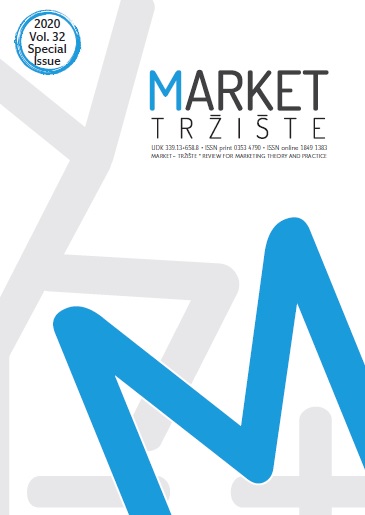Consumer Segmentation in Food Retailing in Croatia: A Latent Class Analysis
Consumer Segmentation in Food Retailing in Croatia: A Latent Class Analysis
Author(s): Ivana Pavlić, Katija Vojvodić, Barbara PuhSubject(s): Business Economy / Management, Marketing / Advertising
Published by: CROMAR (Hrvatska zajednica udruga za marketing) i Ekonomski fakultet Zagreb
Keywords: latent class analysis; consumers; food retail stores; segmentation; satisfaction;
Summary/Abstract: Purpose – In order to anticipate satisfaction with a retail store and its offer, it is crucial to consider whether the store fulfils the expectations of different consumer fragments with regard to store attributes. The main goal of this paper was to identify different consumer segments in accordance with their level of satisfaction with various retail store elements and to define the profile of each segment. Design/Methodology/Approach – An empirical study was conducted on 500 Croatian consumers, applying convenience sample through highly structured questionnaire. Using factor analysis, statements were divided into five meaningful dimensions (product assortment, price, store atmosphere, retail store quality and retail service quality). These factors were used as indicators for the latent class analysis. Findings and implications – The findings have indicated an optimal solution of five consumer segments with different level of satisfaction. Each of the identified segments (convenience-oriented, disinterested, assortment-oriented, price-sensitive and grey consumers) is described in terms of socio-demographic and behavioural variables. This research provides insight into the factors that influence customer satisfaction. It also helps retail managers develop appropriate strategies to approach different consumer segments and improve their satisfaction. Limitations – The research was undertaken in a single Croatian county, which can limit the generalisation of the findings. Another limitation refers to the use of factor results instead of the original list of items in the analysis of segments.Originality – This study contributes to existing literature by providing useful insights into different consumer segments based on their level of satisfaction with retail store context in Croatian food retailing. Practical directions to target specific consumer segments more efficiently are proposed. As far as we know, no other studies have merged consumer segmentation and the latent class analysis in the context of the Croatian retail market.
Journal: MARKET/TRŽIŠTE
- Issue Year: 32/2020
- Issue No: SI
- Page Range: 9-29
- Page Count: 21
- Language: English

